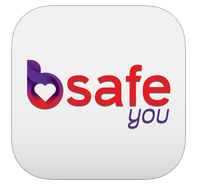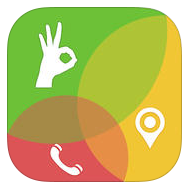Chapter 57: Safety
Lumen Learning
Safety Consciousness on Campus and in College
College and university campuses tend to have a special feel—so special that when you are on campus you may feel you are fully apart from the wider world around you. But the reality is that any campus is subject to the same influences—indeed, crimes—as the towns and cities that flank the campus. And so it is important to be aware of your surroundings, the people near you, and the goings on in your physical spaces and in your virtual spaces at all times.
In this topic, we explore college safety concerns, and share tips and resources to help ensure that you are always safe, protected, and no more than a phone call away from help if you need it.
Safety Consciousness
Safety consciousness is a term describing your awareness of hazards, and your alertness to potential danger. In order to have safety consciousness, you must value safety no matter where you are or what time of day it is.
Your college or university must also be safety conscious—not only by choice, but also by law. In 1990, Congress enacted the Crime Awareness and Campus Security Act, which required all schools that receive federal student aid to share information about crime on and around their campuses. The act is now generally just referred to as the Clery Act, in memory of Jeanne Clery, a student killed in her dorm room in 1986.
What does the Clery Act require your college to do? If your college is receiving federal student aid, here are the major legal requirements it must comply with:
- Have emergency notification and evacuation procedures for alerting the campus community about significant emergencies or dangerous situations. Disclose your policies and procedures in the annual security report.
- Issue timely warnings to alert the campus community about crimes that pose a serious or continuing threat to safety. Disclose your policy in the annual security report.
- Keep a crime log that records, by date reported, all crimes reported to the campus police or security department.
- Keep a fire log that records by date reported, all fires in on-campus student housing facilities.
- Collect crime reports from campus security authorities within the institution.
- Request crime statistics from local law enforcement in the jurisdiction where the institution is located.
- Submit crime and fire statistics to the Department of Education via a Web-based data collection.
- Have missing-student notification procedures to aid in determining if a student is missing, and in notifying law enforcement personnel. Disclose your policy and procedures in the annual security report.
- Publish an annual security report containing campus security policy disclosures and crime statistics for the previous three years.
- Publish an annual fire-safety report containing policy disclosures and fire statistics for on-campus student housing facilities for the previous three years.
This valuable set of requirements is important for every student to be aware of. It is readily available to you and your family. You don’t need to be a student to access this information about any school.
Strategies for Staying Safe on Campus and Beyond
One of the best strategies for staying safe on campus and beyond is to ask questions. Take the initiative to learn more about your college surroundings, the community culture, and safety precautions you’d be well advised to implement.[1] Below are some questions you can ask to open up important conversations about campus and community safety.
| QUESTIONS | CONCERNS [2] | |
|---|---|---|
| 1 | How is the college creating a safe environment for all faculty, staff, and students? | Your concern about a safe environment on campus and in the surrounding communities is a consumer concern as much as a learner concern. As you and your college make safety a shared priority, awareness builds and safety measures expand, which creates a safer space for you to learn in. Measures can be extensive. Ask for specifics. |
| 2 | What communication procedures are in place for emergencies? | Many colleges and universities send emergency phone messages, email messages and text messages to all students, staff, faculty, administrators, board of trustees members, etc. Institutions may have sirens and alarms. Signage on campus may be used for alerts, along with other measures. |
| 3 | Can you tell me about campus police and security personnel, and how they coordinate with local police? | Your campus should have a full contingent of campus police and security personnel who coordinate closely with local police as and when needed. |
| 4 | How are sexual assaults on campus handled? | Does the college handle investigations or do local authorities handle investigations? Who should you complain to if you have a problem? What confidentialities are in place? |
| 5 | How do students learn about safety on campus? | Many institutions provide students with classes that help them learn how to intervene as bystanders in altercations. Some courses give students advice about other safety measures. You can encourage your institution to offer workshops or other learning opportunities if it doesn’t already offer them. |
| 6 | What measures are in place for protecting students who live off-campus? | Some schools help students find safe housing off campus. Your school might have an off-campus housing department. |
| 7 | To what degree do alcohol and drug abuse pose issues on campus? How are violations handled? | One of the best sources of information about drugs and alcohol on campus is fellow students. You can find information about violations in the annual security report. |
Tips for Staying Safe
Walking, driving, traveling:
- Travel with a buddy.
- Use the campus escort service at night, especially if you are alone.
- If you live off-campus, call someone when you get home.
- Keep moving; don’t linger (especially at night).
- Carry pepper spray or pepper gel.
- Keep a personal alarm (for example, on a keychain).
- If you have a car, lock it.
At home:
- Keep your windows and doors locked.
- Keep the main door to your home, hall or apartment building locked at all times.
- Don’t let anyone into your dwelling that you don’t know.
On campus:
- Keep a close eye on your belongings when you’re in a library.
- Get a locking device for your laptop.
- Participate in a college safety program.
- Be cautious, not paranoid.
Anywhere:
- Make sure your phone is charged.
- Know the phone number for Campus Safety.
- Put emergency numbers in your cell phone.
- Carry emergency cash.
- Speak up if you notice something going on.
For a truly comprehensive list of tips for staying safe on and off campus, visit Campus Crime Prevention Personal Safety Tips from Fort Hayes State University.
Also, don’t hesitate to take advantage of campus and community resources, which may include any of the following:
- Web sites, offices, organizations, and individuals with safety information
- Campus police and campus security
- Local police
- Sexual assault and relationship-violence services
- Shuttle services
- Escort services
- Counseling programs
- Mental health programs
- Substance abuse programs
- Local health care centers
- Campus abuse hotlines
Safety Apps
One of the very best safety measures you can take at any time is to keep emergency numbers handy, either on your phone or in your wallet or backpack or a place where you can easily access them. You may also find it helpful to have a safety app on your mobile device. Consider downloading any of the following free apps.
| MOBILE DEVICE SAFETY APPLICATIONS | |
|---|---|
 |
bSafe is a personal safety app designed to keep you and your friends safer 24/7. It has features for everyday safety and real emergencies. You can set up your own personal social safety network. |
 |
Circle of 6 U is built specifically for colleges and schools, connecting students to each other and to critical resources on specific campuses. The tool lets you choose up to 6 trusted friends to add to your circle, so that if you get into an uncomfortable or risky situation, with two taps you send your circle a pre-programmed SMS alert message indicating your exact location. |
 |
OnWatchOnCampus: With just 2 taps, your friends and emergency first responders are alerted to your GPS location and that you need help. |
 |
MyForce: This tool offers users instant notifications, monitoring agents, nationwide coverage and fast emergency response. When an alert is sent, the 24/7 safety agents track your whereabouts and pinpoint your exact location. They listen in and assess the details. |
 |
React Mobile: Users can quickly send out a widespread emergency alert without having to access and unlock their phone. You choose which contacts you would like to share your location with. Then your contact list can be sent an email and a text message with a link to your GPS location. You can also send an “SOS Help Me” message to an unlimited number of buddies. |
 |
Watch Over Me: This tool turns your mobile device into emergency tool with just a shake, even if your phone is locked. The shake turns on your phone’s alarm and video camera, and sends an alert to your emergency contacts. |
Resources for Learning About Safety in College
Your personal safety both on- and off-campus, and the safety of your family and friends, is a treasure. The more you know about safety, perhaps the more safe you can be and the more safe you can help others be. Here are many resources to help you learn more about safety.
- The Campus Safety and Security Data Analysis Cutting Tool (click on Get data for one institution/campus)
- Frequently asked questions about the Best Colleges rankings and crime reports
- The Handbook for Campus Safety and Security Reporting and HandbookQuestions@ed.gov
- Suggested Resources regarding campus sexual assault training and prevention efforts
- Emergency Management for Higher Education (EMHE) grant program
- Action Guide for Emergency Management at Institutions of Higher Education
- College Drinking Prevention
- Travel Warnings and Consular Information Sheets for student considering traveling abroad
Sexual Assaults
- Not Alone for students and universities regarding sexual assault on campus
- SAFER (Students Active For Ending Rape)
- How to research and discuss sexual assault on college campuses
- National Coalition of Anti-Violence Programs working to prevent and respond to violence against members of the LGBTQ community
- RAINN (Rape, Abuse & Incest National Network)
- 1in6 for men who have been victims of sexual abuse and assault
- Clery Center Help for Victims
- Referrals for Sexual Assault and Rape by State
- Culture of Respect immediate help and legal aid for students, friends and family members who have been victims of on-campus sexual assault
- Joyful Heart Foundation helping sexual violence survivors reclaim their lives
- Male Survivor
- National Alliance to End Sexual Violence
- National Center for Victims of Crime
- National Center on Domestic and Sexual Violence
- National Sexual Violence Resource Center
- Stalking Resource Center
- VRLC (Victim Rights Law Center)
Activity: Personal Security
Objective
- Describe strategies for staying safe on campus and elsewhere
Directions
- Make a list of 3–5 campus safety issues you’re personally concerned about. This might include anything from worrying about parking lot security and car break-ins to date rape or hate crime.
- Visit your college Web site, and search for safety and security information that’s relevant to your concerns. Record the name and contact information for each resource you find and any procedures you learn about. For example, if you’re worried about your backpack or computer getting stolen while you’re at school, find out what should you do if it happens. Who should you call, and what might you need to provide? If you come across useful prevention measures (e.g., “record the serial number of your computer somewhere else, so you’ll have it for the theft report”), write those down, too.
- For the assignment, use the information you found to create your own Safety Directory, as below.
| Safety Issue | Resource | Phone Number | Address/Web Site | Important Information |
- Make sure the information is also stored somewhere in your computer and phone so you can find and use it later. (Add it to your contacts, for instance.)
- Follow your instructor’s guidelines for submitting assignments.
Licenses and Attributions:
CC licensed content, Original:
- Campus Security. Authored by: Linda Bruce. Provided by: Lumen Learning. Located at: https://courses.lumenlearning.com/suny-collegesuccess-lumen1/chapter/safety/ License: CC BY: Attribution
CC licensed content, Shared previously:
- Campus Security. Authored by: Hector Alejandro. Located at: https://www.flickr.com/photos/hectoralejandro/3839966929/sizes/l. License: CC BY: Attribution
All rights reserved content:
- Campus Safety – Safety Tips for College Students. Authored by: personalsafetyexpert. Located at: https://youtu.be/iijKh6l8Ssw. License: All Rights Reserved. License Terms: Standard YouTube License.
Public domain content:
- Campus Safety. Provided by: US Department of Education. Located at: http://www2.ed.gov/admins/lead/safety/campus.html. License: Public Domain: No Known Copyright
- Campus Security. Provided by: U.S. Department of Education. Located at: http://www2.ed.gov/admins/lead/safety/campus.html. License: Public Domain: No Known Copyright
- License: Public Domain: No Known Copyright
Adaptions: Relocated learning objectives. Some videos removed.

